August 2025 News
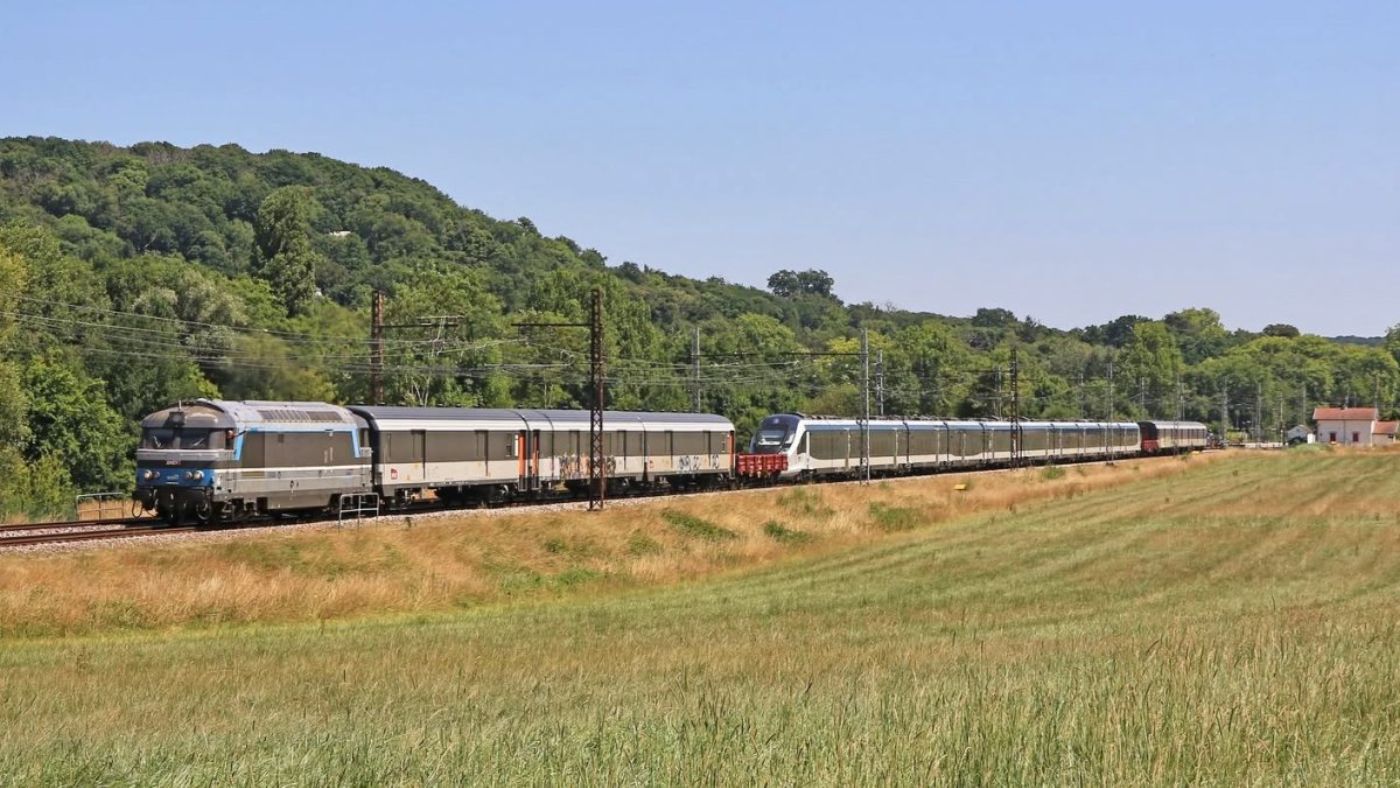
Oxygène testing continues
Testing of the CAF Z 26700 Oxygène units now continues in France with the prototype moving to Plouaret in Bretagne for manoeuvre and track circuit testing in the yard under the auspices of the l'Agence d'Essais Ferroviaires. On 31 June 'Isabelle liveried' BB 67424 is seen at Vauboyen en route from Villeneuve-Saint-Georges to Plouaret. Photo: Christophe Masse.
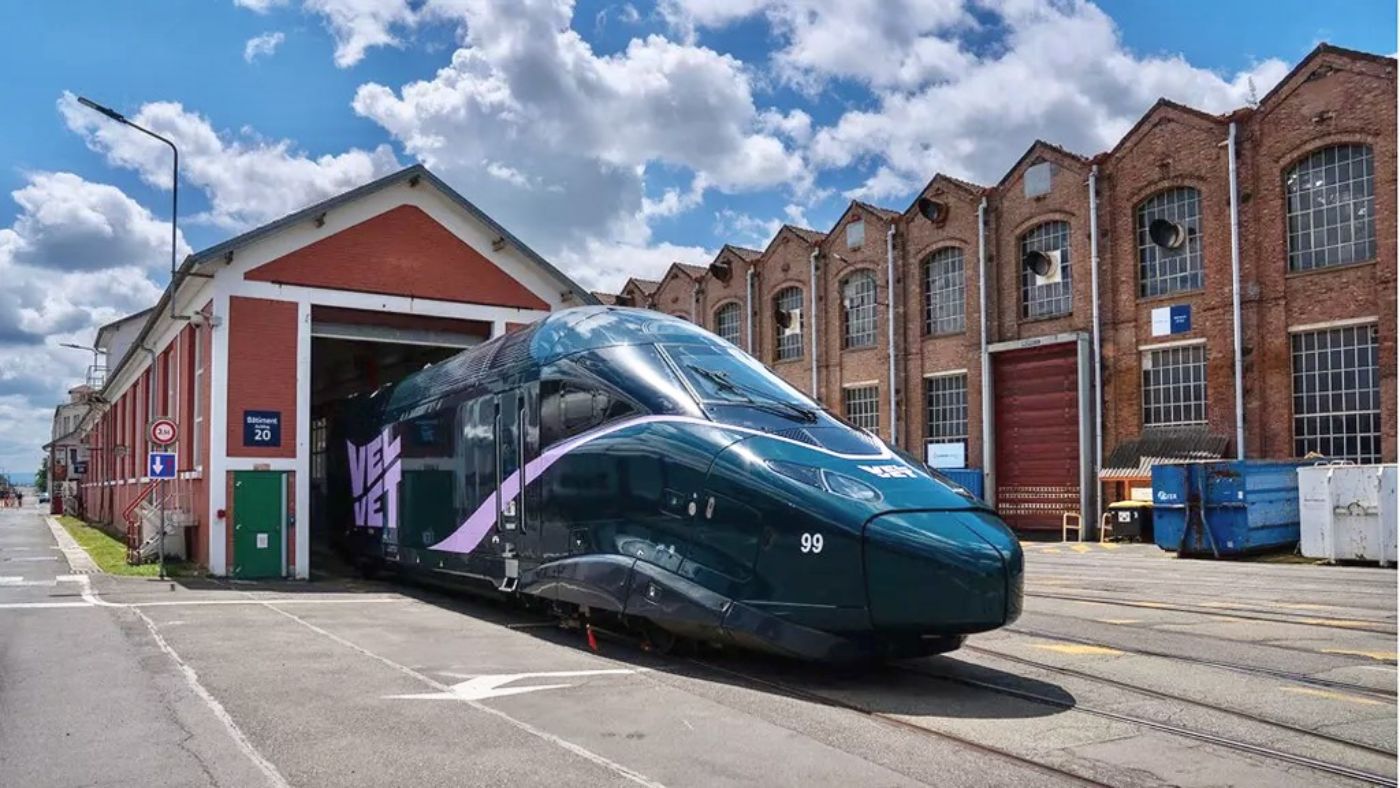
Proxima unveils first 'Velvet' power car
New open access operator Proxima has unveiled its first power car and the brand name 'Velvet' for its forthcoming services. The name has been chosen to reflect simplicity, delight and innovation, and Proxima’s aim to attract new customers to rail. Alstom is currently building 12 nine-car Avelia Horizon trainsets (similar to SNCF’s TGV M) for Proxima, with the first power car completed at Belfort and the first coach under construction at La Rochelle. Testing is expected to begin next year.
Proxima is in talks with SNCF Réseau and Lisea to launch Paris – Bordeaux services in 2028, initially with four trainsets. Services to Nantes, Rennes and Angers will be added as further deliveries take place. Alstom is investing €150 million to increase Avelia Horizon production capacity to meet the order for 115 from SNCF and subsequent orders from Proxima and Morocco's ONCF. Lisea, operator of the southern section of the Paris – Bordeaux LGV, commenced construction work in June on its depot at Marcheprime, south of Bordeaux, where Alstom will maintain Proxima's Avelia Horizons.
It is only just over a year since the newest entrant to the French domestic market was launched, and announced that it had secured €1 billion from investors to place a firm order with Alstom in October 2024. In contrast, Le Train, which plans high-speed services down France's Atlantic Coast, has yet to announce when construction will begin of the trainsets it has ordered from Talgo. In recent weeks, Le Train has met with the Minister of Transport and submitted evidence, alongside Trenitalia France, Transdev, and Renfe, to the National Assembly fact-finding mission on the role of rail transport in opening up regional infrastructure. In July, Le Train submitted a bid to operate the 'Poitou-Charentes' TER route package that has been put out to tender by Nouvelle-Aquitaine région. Photo: Alstom.
SNCF Voyageurs Director-General responds on competition
Competing operators have forced SNCF Voyageurs to change tactics, PDG Christophe Fanichet said in an interview with BFM Business on 4 July. Questioned on the 33% drop in Paris – Marseille fares reported by price-comparator Kombo in the two weeks after the start of Trenitalia’s competing service, he said “that’s not a figure I recognise”. According to the regulator ART, he said, fares on the route had fallen by around 10%, largely due to SNCF Voyageurs adding more Ouigo services, “because Ouigo is our weapon in the low-cost war”. In a later response, SNCF Voyageurs said: “We believe these figures [Kombo’s] have no basis in reality. Who seriously imagines that Inoui ticket prices would have fallen by so much in a few days?”.
Pointing out that SNCF’s TGV network served 200 stations, Fanichet said that one-third of his routes were loss-making, one-third broke even and one-third were profitable. He criticised competitors for cherry-picking routes and destinations: “…competition should bring high-speed trains to more towns and cities, but that’s not what I hear from our competitors. Competition must not be at the expense of provincial towns” he said. “Competitors serve three or four destinations; between Paris and Lyon they do not serve Mâcon and Le Creusot [unlike SNCF]”. Without mentioning Proxima, he referred to “recent announcements” about the Atlantique route. “I have not heard that they will serve Angoulême, Poitiers or Tours”, he said.
ART’s 2023 annual report shows that rail is increasingly popular for journeys of over 100km, with 6.3 billion more train passenger-km recorded than by car on autoroutes. SNCF was heading for a record summer, Fanichet said, with 12 million tickets already sold and 1.3 million journeys booked for the first holiday weekend (5/6 July).
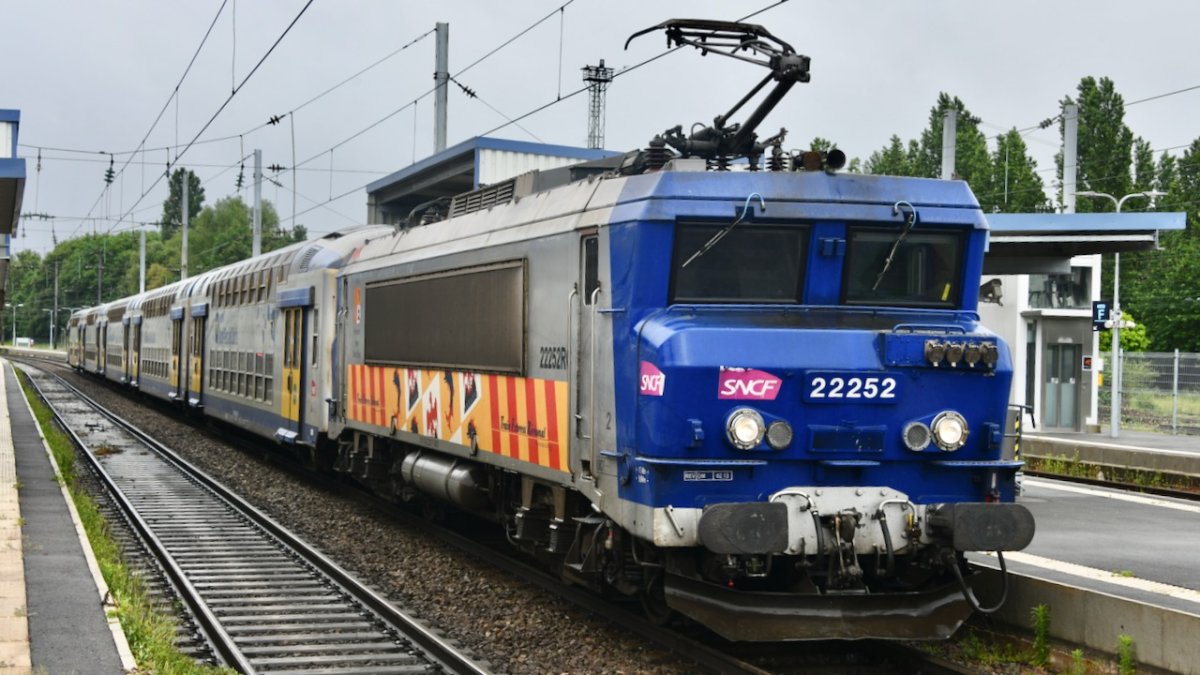
Farewell VR2N stock
The final workings of Lille-based VR2N push-pull stock and BB 22200RC locomotives took place on 4 July with the introduction of reduced summer schedules. When the normal timetables return on 25 August, only a few push-pull diagrams will remain using shortened V2N sets transferred from Paris (see May News). These will be operated with BB 22200R locomotives transferred from Marseille, released from Marseille – Nice services now operated by Transdev. Above. On 28 May BB 22252RC still in PACA livery waits at Valenciennes with a VR2N set in Nord Pas-de-Calais livery on TER 841808 09.13 Maubeuge – Lille Flandres. Below. Rather bizarrely, to mark the end of VR2N stock local graffiti artists redecorated set N08 in a variety of liveries, seen at Lille Flandres on 30 June. Both photos: Didier Delattre.

Nouvelle Ligne Paris Normandie – on or off ?
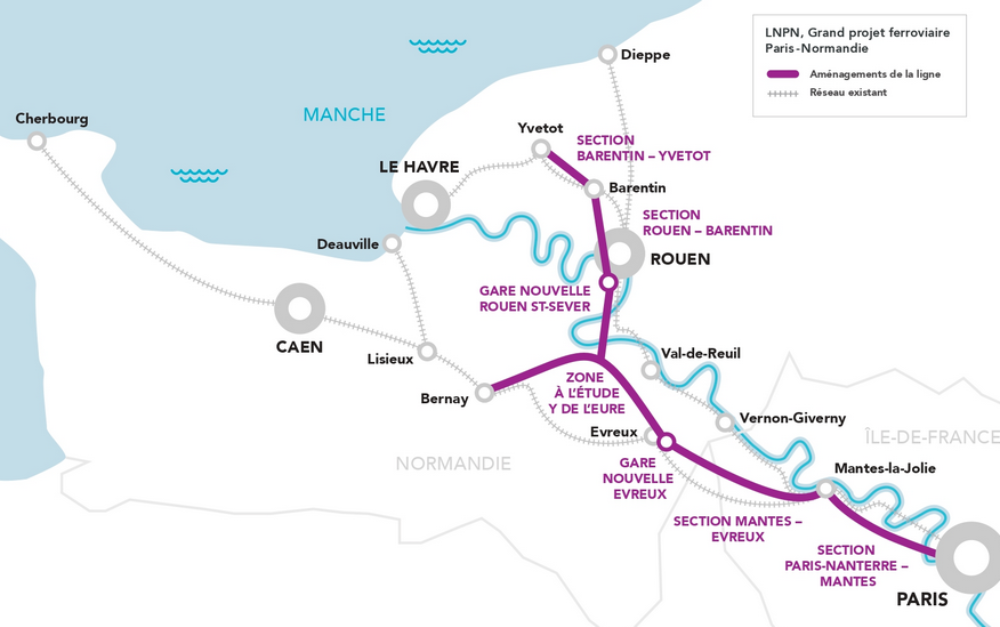
The Paris – Normandie LGV project has the State’s ‘full support’ according to transport minister Philippe Tabarot, despite the doubts mentioned in July News. Exclusion from the forthcoming Île-de-France master plan was thought likely to have scuppered the project, which is strongly opposed in areas west of Paris but supported in Normandie. A meeting of the LNPN steering committee on 1 July noted that the project had reached an impasse following the public consultations in 2024 on the Phase 1 Nanterre – Mantes-la-Jolie and Rouen – Barentin sections, and reiterated the ‘urgent need’ to take account of objections.
Tabarot announced an interministerial appointment to create ‘a new dynamic’ for the project, aiming to restore trust between the various partners. Serge Castel, interministerial delegate for Vallée de la Seine, will chair a series of dialogues starting in September aimed at revising the scheme in the light of opposing views. The redraft will update the principal aims:
● improve access to the Val d’Oise and other areas northwest of Paris, in particular by construction of a flyover outside Saint-Lazare to eliminate conflicting movements between suburban trains and those heading for Normandie.
● make operations more fluid and improve frequency, punctuality and journey times of Normandie – Paris trains and those of Ile-de-France, the two Phase 1 sections bypassing congested lines at Rouen and between Mantes-la-Jolie and Paris; new alignment would be suitable for 250km/h running.
● free-up freight capacity on the classic route to Le Havre to accommodate planned modal shift to rail and inland waterway.
Speaking during a visit to Le Havre on 3 July, Tabarot said LNPN had his “200% support” and he was “determined to do everything possible to relaunch the project” which he believed to be in the national interest both to relieve congested lines out of Paris and improve freight access to the port of Le Havre. He expressed his willingness “to find funding and speed up the [approvals] timetable” though without setting any date. Opening of the high-speed sections had been envisaged between 2035 and 2040.
No mention was made of the project’s impact on Rouen’s SERM plans (see April 2024 News). Cancellation of the proposed new alignment through central Rouen would jeopardise reopening of Saint-Sever station which is to accommodate Line C as well as LNPN trains, relieving the existing Rive-Droite station, and put a brake on redevelopment of the Rive-Gauche area.
Map: SNCF Réseau.
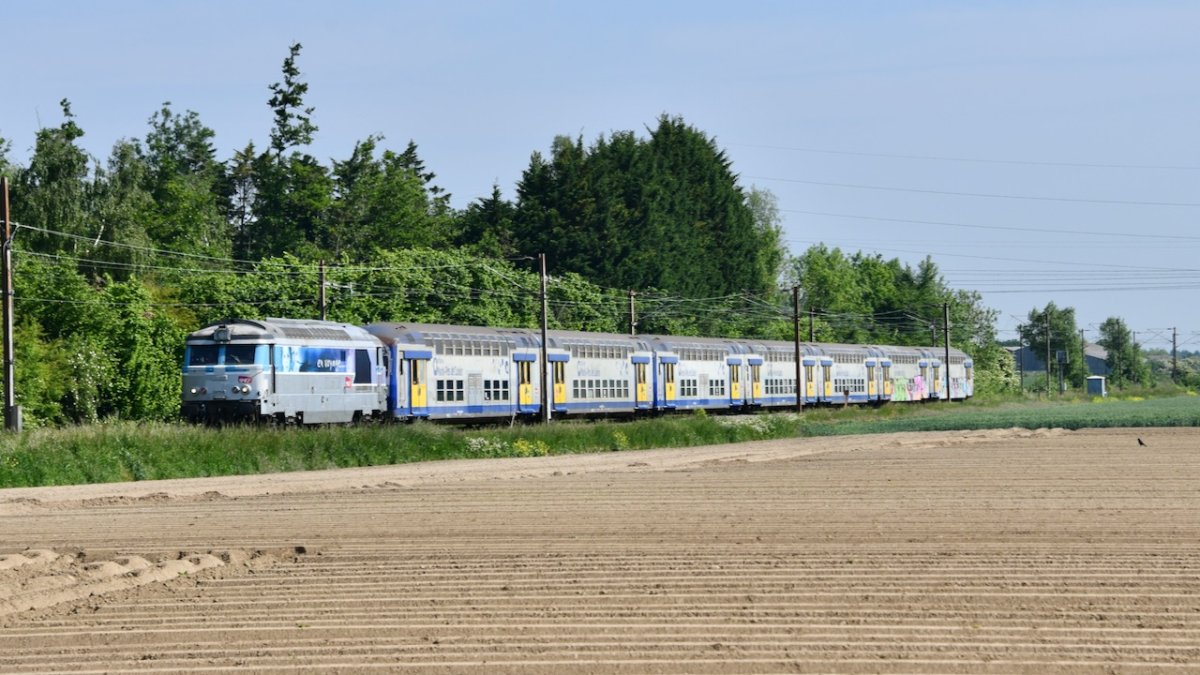
A final journey for NPdC liveried VR2N set N05 and two other vehicles seen passing Wavrin behind BB 67542 on 20 April, running as 805783 Lille St Sauveur – Sotteville. Photo: Didier Delattre.
Motorway tolls to fund rail
€2.5 billion annually of motorway toll receipts is to be hypothecated for transport investment, of which €1.5 billion will be allocated to rail. This is one of 14 recommendations of the Ambition France Transports commission on transport financing published on 9 July. Elected officials, transport professionals and economists examined a number of options for funding the increasing costs of maintenance and investment as transport’s green transition accelerates. SNCF’s submission had underlined its urgent need for certainty about future investment levels, with a shortfall of at least €1 billion annually for maintenance envisaged from 2028 (see July News).
Announcing that a framework law covering AFT’s principal recommendations would be put before parliament in December, transport minister Philippe Tabarot confirmed the allocation of revenues from future motorway concessions to transport infrastructure and increased investment for regeneration of the rail network. “This constitutes an historic step forward, eagerly awaited” he said, though the income from road tolls would not start to flow until 2031, after the first operating concessions come up for renewal.
Future concessions would be subject to “more demanding [financial oversight] and tighter regulation”, the minister said (ie less generous than the present arrangements). The revenues would be raised with no significant increase in tolls, and would be applied direct to transport spending without appearing in government budgets. A second draft law next year would set out investment priorities.
The minister was less clear on how funding would be raised for the period before motorway concessions are renewed. Receipts from carbon-tax credits might be available, along with finance from the "many private-sector companies which have never been more keen to invest in rail." SNCF's outgoing PDG Jean-Pierre Farandou welcomed the decision as "excellent news". He was “delighted to see a solid consensus emerge on the financing of rail modernisation”.
Other recommendations include:
- a regional eco-tax on foreign-registered heavy goods vehicles to fund road maintenance;
- a tax on parcels deliveries in urban areas (up to €200 million a year, though it is not clear how this fits with the general €2 tax on parcels from outside France which was announced in the national budget on 15 July)
- a €10 increase in car tax to raise €380 million a year;
- gradual elimination of reduced fuel-tax rates for road hauliers (€1.2 billion a year by 2030);
- lowering the weight/tax threshold for commercial vehicles from 1.5 to 1.4tonnes (€400 million a year)
The proposal for a temporary 2% tax on certain categories of rail ticket, which might have raised up to €300 million annually, was not favoured by the commission.

On the afternoon of 19 June BB 22341 is seen at Sens on the former PLM l'Artère Impériale with the VSOE heading from Paris to Portofino via Marseille and Ventimiglia. Photo: Jean-Louis Poggi.
More funding for Ligne Nouvelle Provence-Côte-d’Azur
● Final studies for the multimodal interchanges at Marseille Saint-Charles and Saint-André, €7.5 million (SNCF Gares et Connexions);
● the new station to serve Nice Côte-d'Azur airport, €295 million (SNCF Gares et Connexions);
● deployment of ERTMS (European Rail Traffic Management System) between Marseille and Vintimille, work in progress, €43.3 million (SNCF Réseau);
● fitting ERTMS equipment on 20 BB 60000 locomotives, €2.2 million (SNCF Réseau).
Construction of the airport station at Saint-Augustin started on 19 June. Europe’s first gare bioclimatique will make extensive use of the higher temperatures and heavier rainfall caused by climate change to achieve a low-emission footprint in the environmentally sensitive area around the airport. The project, described in January 2024 News, will have platforms for regional trains and TGVs, with a 10min interval TER service planned for 2032.
Also underway over the summer is the first stage of expanding the train maintenance and storage facility at Marseille Blancarde. Remodelling of tracks, signalling and catenary will provide additional sidings to eliminate overnight maintenance in the platforms at Saint-Charles.Also underway over the summer is the first stage of expanding the train maintenance and storage facility at Blancarde. Remodelling of tracks, signalling and catenary will provide additional sidings to eliminate overnight maintenance in the platforms at Saint-Charles.

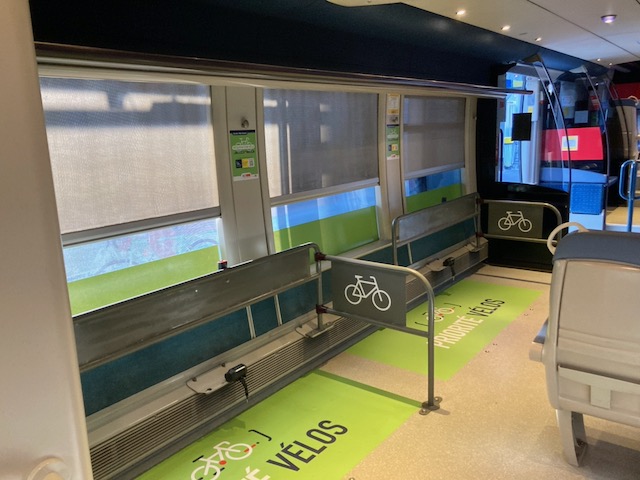
Occitanie TER Class X 73500 autorail No. X 73633 has been redesigned to accommodate more bicycles by removing a section of seating. It has also been given a special Vivez l’Occitanie en train + vélo livery. Bicycles are not charged but spaces need to be reserved. The autorail is currently operating a daily return trip from Toulouse to Aurillac coupled with another two or three vehicles. From September it will operate on the ligne des Cévennes at weekends. Seen above departing from Toulouse as part of TER 871204 08.57 Toulouse – Aurillac on 11 July.
Photos: Georges Turpin.
News in Brief
Bourgogne-Franche-Comté. Following award in May of the operating contract for the Bourgogne-Ouest Nivernais group of lines to SNCF Voyageurs, the sole bidder, a formal seven-year agreement with an optional three-year extension was signed at Nevers on 23 June. SNCF Voyageurs will now create a subsidiary, SNCF Voyageurs Bourgogne Ouest, to operate the services. It takes over on 13 December with a dedicated operations centre and a rolling stock maintenance facility to be set-up at Nevers.
New staff will receive less-generous terms than previously offered by SNCF. Existing staff retain their terms of service, but there will be some renegotiation over the next two years. Disquiet over the change is felt in several towns, particularly Montchanin where 53 posts are to be transferred to Chalon-sur-Saône by 2027. Two more contracts including Paris – Dijon – Lyon are to be put out to tender shortly.
The région subsequently announced an order for a further 14 Régiolis (Coradia Polyvalent) units. The order consists of a further five six-car electric sets (Coradia Liner) for Paris – Dijon – Lyon services and nine four-car bimode units for routes out of Besançon. Design and construction will be undertaken by CAF at Reichshoffen with Alstom supplying some of the components.
AURA. Auvergne-Rhône-Alpes région has secured loans totalling €440 million from state bank Caisse des Dépôts. Together with €68.3 million from AURA’s own resources and €77.5 million provided by other banks, the funds will finance purchase of 71 EMUs through its rolling stock SPL. This covers more than half the proposed acquisition of 130 trains outlined in the operating agreement signed with SNCF Voyageurs in 2024.
Ajaccio. Officials voted on 18 June to fund studies costing €1.5 million to assess feasibility of relocating the station to a new site at Saint-Joseph, closer to the city centre and adjacent to the terminus of the Angelo cable car under construction to link the lower and upper parts of the city.
Transdev. Sale by Caisse des Dépôts of 32% of Transdev’s capital to Rethmann France was officially approved on 21 June. The €450 million deal gives the German group a majority shareholding.
Finistère. On 26 June, councillors voted funding for studies of improvements to the (Brest) – Landerneau – Quimper and Quimper – Redon lines. Though not included in the current Bretagne Contract-Plan, electrification of Landerneau – Quimper is back on the agenda as a long-term aspiration. Locals argue that improved service would relieve congested roads, offer an alternative route for Brest TGVs in the event of disruption on the direct line to Rennes, provide capacity for a new Brest – Nantes service via Quimper and Redon, and improve access to Brest airport from southern Finistère. The 84km single track was upgraded in 2017 but plans for a 10km dynamic loop between Hanvec and Pont-de-Buis were shelved. Patronage is up 55% since 2019.
Aix – Annecy. A steering committee is to be set up to take forward the long-proposed doubling of the 39km between Ais-les-Bains and Annecy, seen as an essential component of the Chambéry SERM project.

Modane. Paris – Milan trains were halted for several days after violent storms on 30 June caused a mudslide that covered the tracks in Modane station. Services were restored on 5 July but clearing up took longer. Photo: Le Nouvel Obs.
Agen – Périgueux. In a meeting with stakeholders on 27 June, SNCF Réseau said that €22 million has been allocated for renovation of the route over the next three years, and that the task would be prioritised over other lines.
Don’t call it an eco-tax. The European Community of Alsace is to introduce a tax on heavy vehicles transiting the region, looking to raise funds to cover the cost of repairing the damage lorries do to the roads. Specifically said to be ‘not a revival of the hated eco-tax’ abandoned in 2012 after violent protests, it is nevertheless akin to the heavy-vehicle tax recommended by the Ambitions France Transport commission (see item above).
Eus solution in sight ? A year after the derailment on 24 July 2024 that closed the Perpignan – Villefranche Vernet-les-Bains line at Eus, the commune has agreed to demolition of the damaged overbridge. SNCF, Occitanie région, the commune and residents have been in dispute over the responsibility for and cost of reconstructing the bridge. The maire of Eus is now hoping for an undertaking that funding for rebuilding will be forthcoming from SNCF (judged to be 80% responsible for the damage) and that the commune will be absolved of any expense.
Voies verte. In Gers, the 7km alignment northwards from Condom to Montcrabeau is expected to be transferred from SNCF Réseau to the commune by the end of the year, allowing work to start on the link between the Armagnac and Albret voies verte. When complete, the route will run 68km from Eauze to Feugarolles.
At Montluçon, acquisition should be agreed next month of the 27km to Evaux-les-Bains on the disused line to Eygurande-Merlines (closed 2008). The local communauté des communes will be responsible for the trackbed but maintenance of structures including Eiffel’s lattice-girder viaduc de la Tardes will stay with SNCF Réseau.
Aubrac. With the line open again from 5 July, Cie Gérard’s Aubrac Express project has resumed promotion of the daily Intercités train. As well as 25 podcasts on the line’s history, structures and scenery, tray meals will be available this summer from Restaurant Rodier opposite Campagnac station where the northbound train stops at 12.12. Information boards, cycle charging, parking and left luggage lockers have been installed at five stations.
Épinal. The agglomération will invest €10 million to create an intermodal terminal at the Chavelot ecopark industrial development. Verso Energy plans to manufacture hydrogen-based synthetic fuel on the site and has committed to distributing it by rail.
Ouigoswap. Exchange and resale of tickets on this platform has been extended to cover all services instead of just fully-booked trains as Ouigo hopes to circumvent sales on other sites or social networks like WhatsApp. Tickets can be discounted by up to 50% but sellers only recoup 80% of the original price paid.
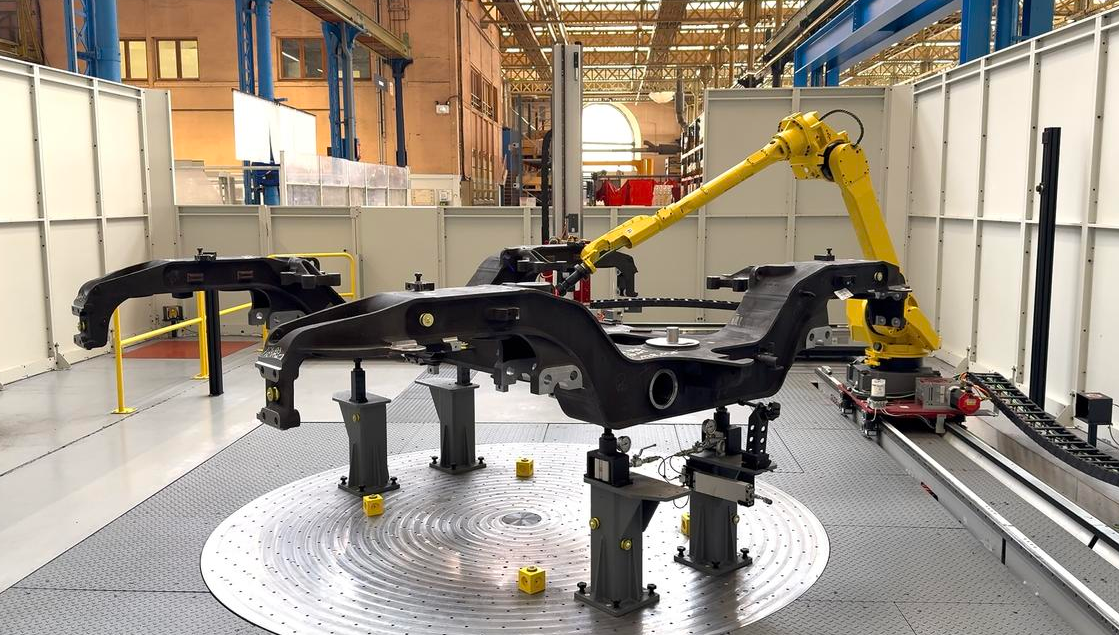
Alstom. At its Innovation Day on 18 June, the Le Creusot plant unveiled the ALICE (Alstom Laser Inspection Cell) robot for contactless design and measurement of bogie geometry. The €1 million apparatus produces results five times faster than existing equipment. Alstom also opened a signalling and hydrogen technology hub at its Aix-en-Provence site. Photo: Alstom.
Hauts-de-France. With TER patronage up 16% in 2024, the region introduced additional weekend trains from 12 July between Calais, Amiens and Paris to ease overcrowding; other extras run to Dunkerque and Calais to cope with the influx of passengers taking up the annual 200,000 summer-holiday tickets on sale at €1. Compulsory reservation is being considered for the busiest routes.
Centre-Val de Loire. Voted on 26 June to introduce the Regional Mobility Tax of up to 0.15% on businesses with more than 11 employees, expected to yield between €24 and €33 million annually. Following cuts in State grants, this year’s budget shortfall for TER operations is €50 million. Nine out of the 13 régions have so far approved the tax.
Canfranc. Aspe valley residents remain anxious after the report on public consultation was discussed at a rowdy meeting at Oloron on 24 June with Jean-Luc Gary, SNCF Réseau’s area director for Nouvelle-Aquitaine. They fear that noise and pollution from the proposed piggyback trains would be environmentally disastrous. “Throughout the consultation,” Gary said “our job [was] to listen… and to provide answers". Nevertheless, participants said many of their questions remained unanswered and SNCF Réseau was unable to satisfy them. A public inquiry will be held in the autumn. If the project is granted public utility, reconstruction of Bedous – Canfranc could start in 2027 for commissioning in 2032 (see item in July News).
Spanish infrastructure authority Adif has awarded a €2.2 million contract for Phase 1 of rebuilding Somport tunnel. The work will define the engineering parameters to be adopted for enlarging the tunnel’s profile and relining prior to award of the main contract later this year.
Grand Est. The région has approved a grant for studies of reopening the 22km Réding – Drulingen branch to serve local industries, three of which have committed to shift some 15,000 lorryloads per year to rail. At Gérardmer, officials voted to turn the disused line to Bruyères into a voie verte, dashing the hopes of those supporting reopening.
Mes Bagages. SNCF’s latest attempt to reduce the amount of luggage carried onboard by TGV passengers is Mes Bagages, a door-to-door service offering guaranteed collection and delivery times for standard and oversized luggage. Geodis will deliver in 24h or 48h whilst the customer travels by rail.
EPR2 Penly. Dieppe and neighbouring communes have received a commitment from Electricité de France that materials and equipment for the EPR2 nuclear power project will be carried by train. As reported in December 2024 News, the 27km line from Rouxmesnil outside Dieppe to the nuclear plant at Penly is to be upgraded to handle the traffic, starting in 2027. Construction of the new reactors is running three years late.
Delle. The 22km line from Belfort, electrified in 2018 at a cost of €110 million, has been served by X 73500 railcars for the past year due to a shortage of EMUs, leading to fears that the electrification is being abandoned. BFC région denies this, saying that a three-year period of diesel operation was planned around EMU refurbishment and that electric trains would be running again in 2026.

Tassin. Tram-train routes from Lyon Saint-Paul to Brignais and Charbonnières-les-Bains are closed until 29 August whilst the heavily-corroded Pont Honoré Esplette overbridge at Tassin is replaced. Photo: France Télévisions/JS.
Aurillac. Fulfilling the promised made on its reintroduction in 2023, the Paris – Aurillac night train (IC 3789/3790) will continue to run every night after the summer holiday period ends on 31 August. Timings are unchanged.
Nantes. The station’s 160m-long mezzanine concourse had to be closed for a time on 30 June due to excessively high temperatures inside the glass-clad structure, despite its bioclimatic credentials. Traders complained of financial loss and SNCF installed two powerful fans to keep the air moving.
Loches. The line from Tours will close from 1 September until the end of March 2026 whilst the second phase of modernisation is carried out: track renewal between Reignac-sur-Indre and Loches (12km). Structures will be renovated, 14 level crossings upgraded, and the viaduct at Esvres-sur-Indre rebuilt. Centre-Val de Loire région is funding the €64 million cost.
Blanc Argent summer closure
The Blanc Argent is closed this summer between Romorantin and Valençay from 5 July until 30 August for track renewal. This follows last summers closure between Romorantin and Salbris and will secure the lines future for the next fifteen years.
With no suitable metre gauge locomotives and track-laying equipment available machinery has been bought in from Switzerland
X 74502 is seen at Romorantin on 21 July, the red flag indicating closure of the section to Valençay. Photo: Georges Turpin.
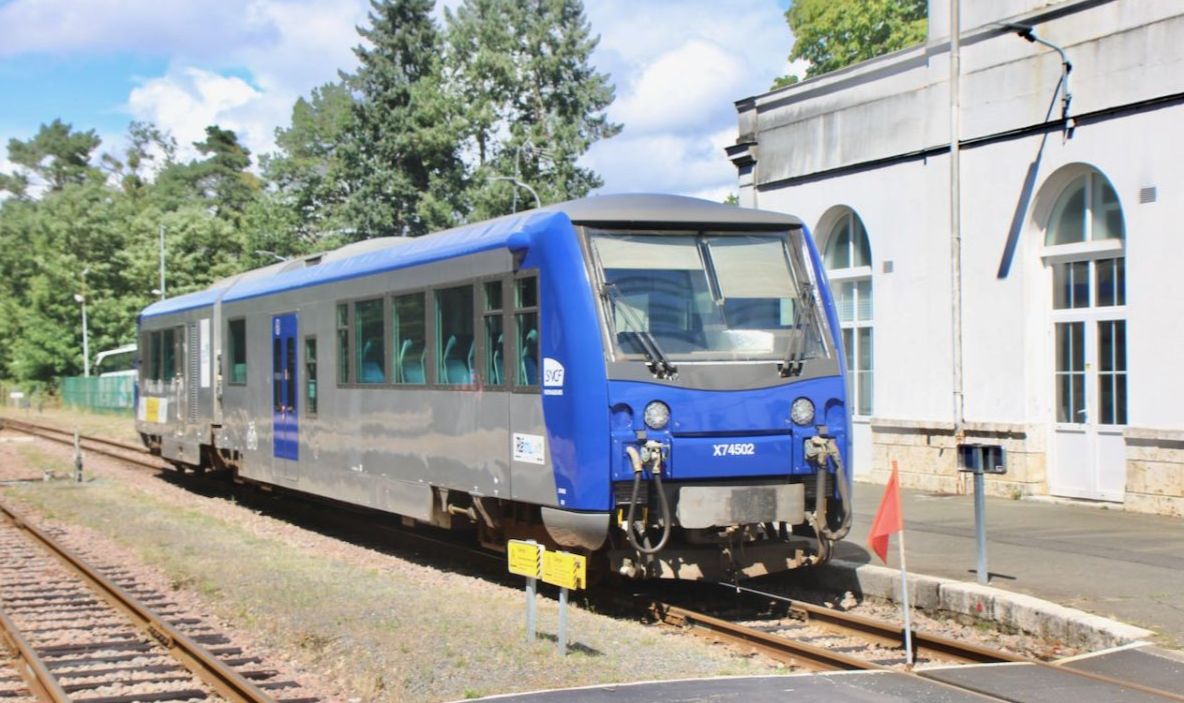

CTSF (Compagnie de Traction et Services Ferroviaires) is a Bordeaux based company with 60 staff and a small fleet of Vossloh G1000 and G1206 locomotives that provide traction and qualified personnel to other operators, mainly on infrastructure and track work. On 17 June Vossloh G1206 1630 and 1126 are seen passing Vicoigne, near Raismes with train 444611 Lille St Sauveur – Juvisy Photo: Didier Delattre.
St Pancras expansion
Throughput at London St Pancras International station will double by 2028 under a two-stage expansion plan outlined in a ‘letter of intent’ signed on 3 July by the infrastructure manager London St Pancras Highspeed and Eurostar. While the existing facilities have been struggling to cope with 11 million passengers annually, studies show that new services planned by Eurostar and competitors could see demand rise to 35 million a year by 2040. Consultants and architects have been appointed to make detailed studies by the end of this year.
In the short term, Phase 1 would see minor alterations to existing arrangements, including optimising customs and border security to raise throughput from 1,800 to 2,700 passengers/h. Phase 2 would involve changes to the international area and connections to the main concourse to ease passenger flows, raising capacity to 5,000 passengers/h (up to seven trains). Depending on the increase in patronage, a third phase planned for the 2030s would make more radical changes to the station’s layout and facilities. One possibility would permit passengers to leave the station direct from the platforms instead of the current time-consuming arrangement which forces them walk several hundred metres downstairs to exit under the gaze of customs and security staff.
Separately, Eurostar said that a supplier would be announced by the end of the year for acquisition of up to 50 new trains for its planned services to Geneva and Frankfurt. It urged the British government to adopt a ‘credible long-term strategy’ for international rail and pointed out that forcing it to share the Temple Mills maintenance depot with another operator might jeopardise its investment.
The UK and Swiss governments are to form a working group to study the regulatory, technical and commercial barriers to introduction of high-speed train services between the two countries. Similar discussions about a London – Berlin service are to take place with the German government.
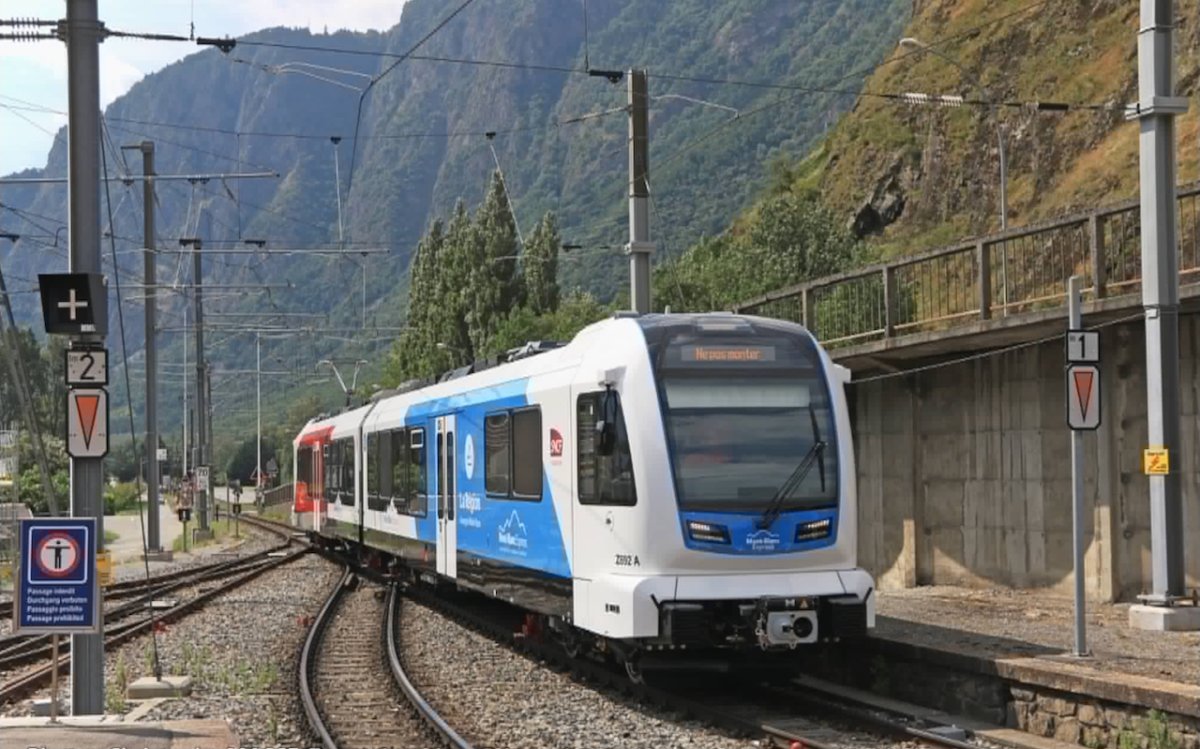
Testing of the new Stadler Z 890 units has been taking place on the Mont Blanc Express (see May News) as part of the formal approval process. Seven Z 890 units have been jointly ordered by Transports de Martigny et Régions (TMR) and SNCF (on behalf of
Auvergne-Rhône-Alpes région). So far two units have been delivered (Z 891/892) with the remainder being delivered at the rate of one per month. The Z 890s will replace the existing Z800s, that date from 1996, and no longer meet requirements for passengers with reduced mobility. On 14 July Z 892 ,one of the four units that will be owned by the Auvergne-Rhône-Alpes région is seen arriving at Vernayaz-MC. Photo: Christophe Masse.
ATS pause delays Eole
Installation of the ATS+ traffic management system on the western extension of RER Line E is being paused due to technical difficulties. SNCF and Alstom announced a ‘temporary suspension’ of work on 3 July whilst a detailed review is carried out. This will include revision of the terms of Alstom’s contract and the scope of the ATS+ project. As a result, Line E’s western extension to Mantes-la-Jolie is unlikely to be fully operational before 2029.
With the core section of the Est-Ouest Liaison Express from Pantin in the east to Nanterre-la-Folie in the west equipped with computer-based train control and ATC (NExTEO), permitting operation of 22 trains/h, ATS+ (automated train supervision) was chosen for the two extensions over existing suburban lines. This was designed to regulate train running and dwell times so as to optimise capacity at the approaches to the central core section. Installation of ATS+ east of Pantin is being handled by Siemens Mobility and is progressing, but considerable difficulty has been encountered with Alstom’s contract for the Nanterre – Mantes-la-Jolie extension, hence the pause. Nevertheless, SNCF still expects a limited service to be operating over this section in mid 2027.
Already running several years behind the original opening date of 2022, it now looks likely that completion of Eole will be seven years late at a cost of €5.4 billion, almost 50% higher than estimated.
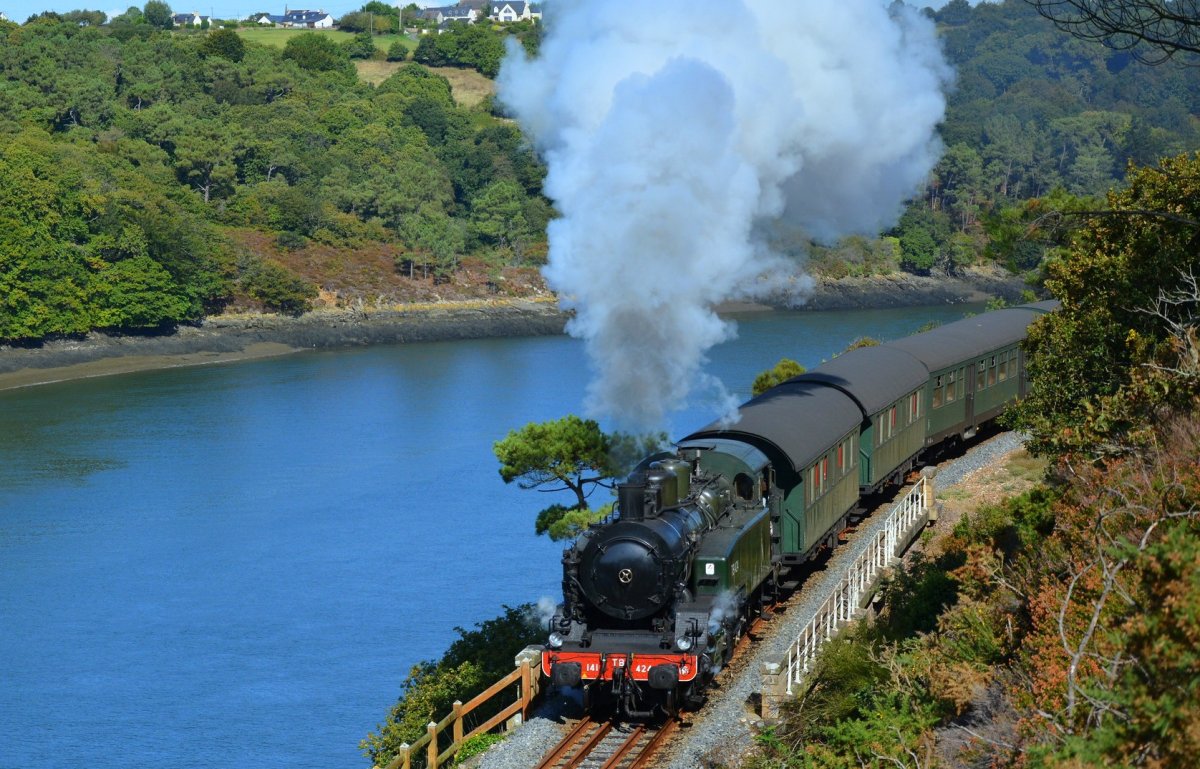
La Vapeur du Trieux finally underway
Following 141 TB 424's four-year overhaul at Carhaix, the Vapeur du Trieux finally started operating on 21 July, two weeks later than planned. The daily round trip alongside the Trieux estuary from Paimpol to Pontrieux should have started on 7 July and 141 TB 424 was towed from Carhaix to Paimpol (see below) on 1 July by CFTA BB 4811 (now Transdev Rail Bretagne). It was then realised that following its overhaul the locomotive had to be re-certified to operate on the national network, causing a delay of two weeks. There is some uncertainty over whether it would have been allowed to operate from 7 July anyway, due to the dry weather conditions, as SNCF Réseau had only allowed CFTLP to operate from Limoges on 14 July with diesel traction. Above 141 TB 424 runs alongside the Trieux River near Traou-Nez, a stop no longer served by the tourist train.
Photos: Jean-Louis Poggi.
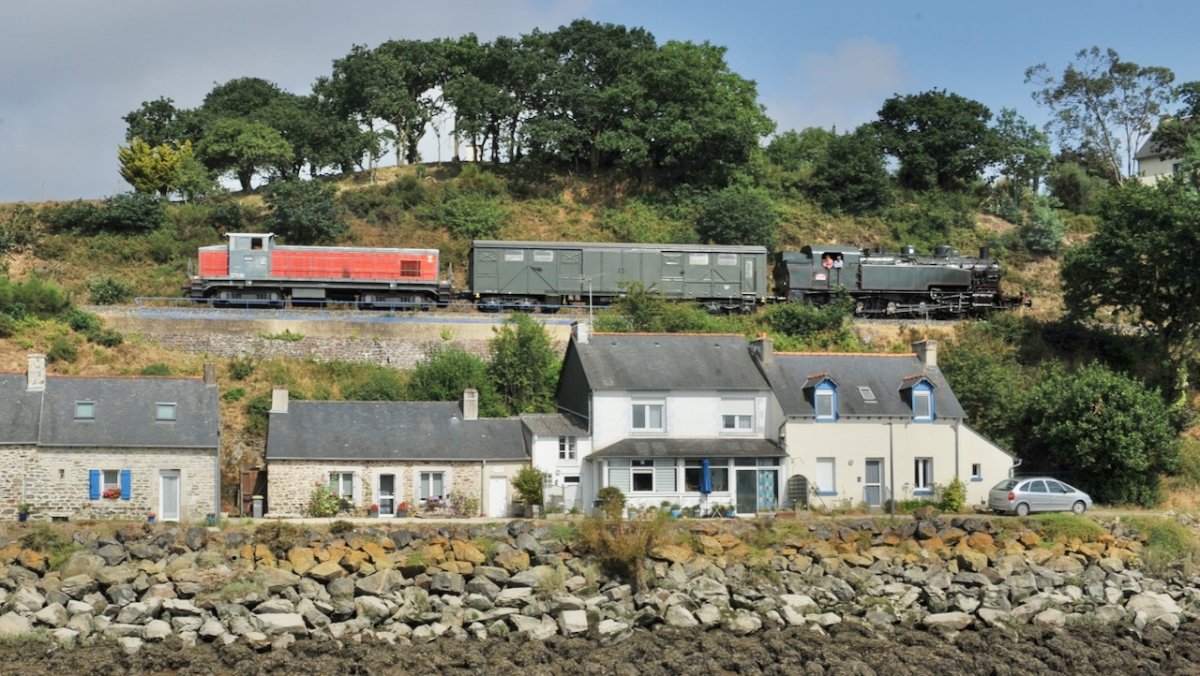
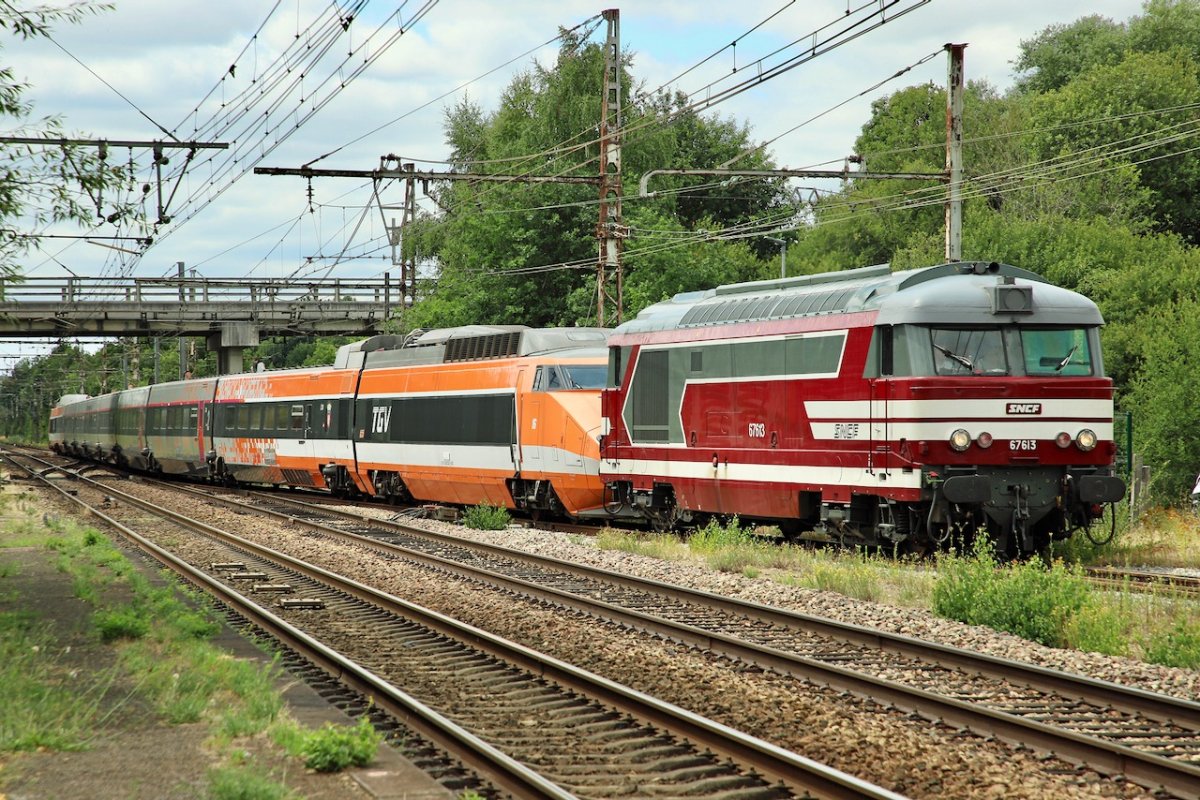
Transvap celebrates 50th anniversary

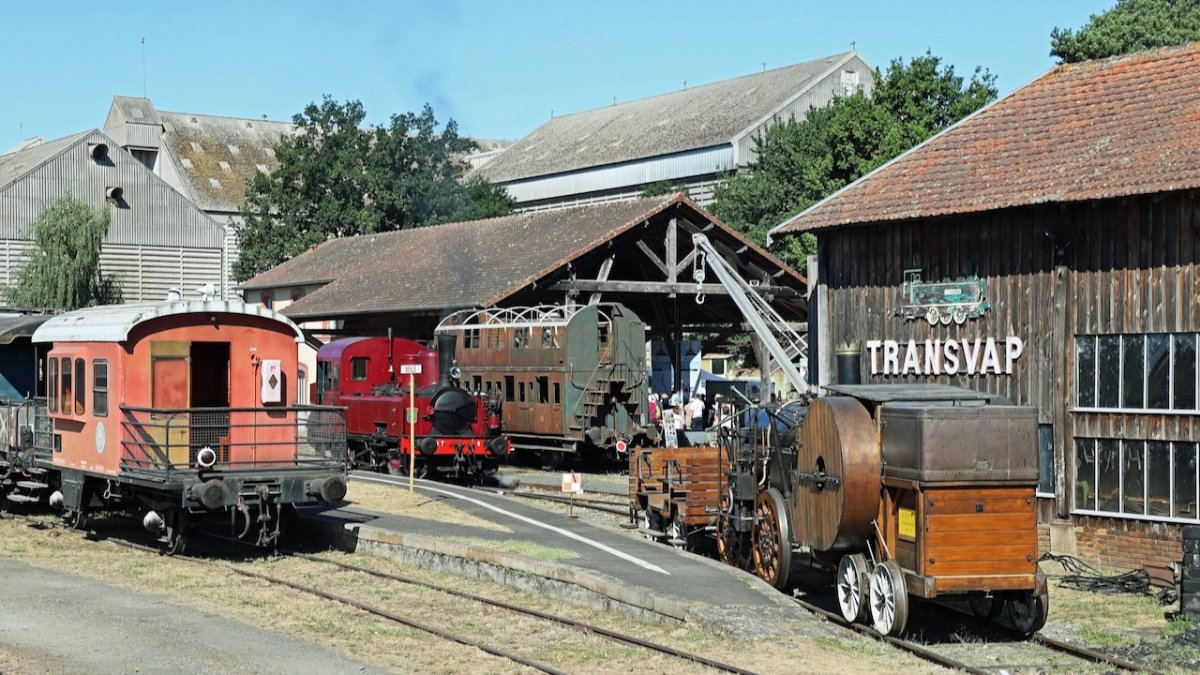
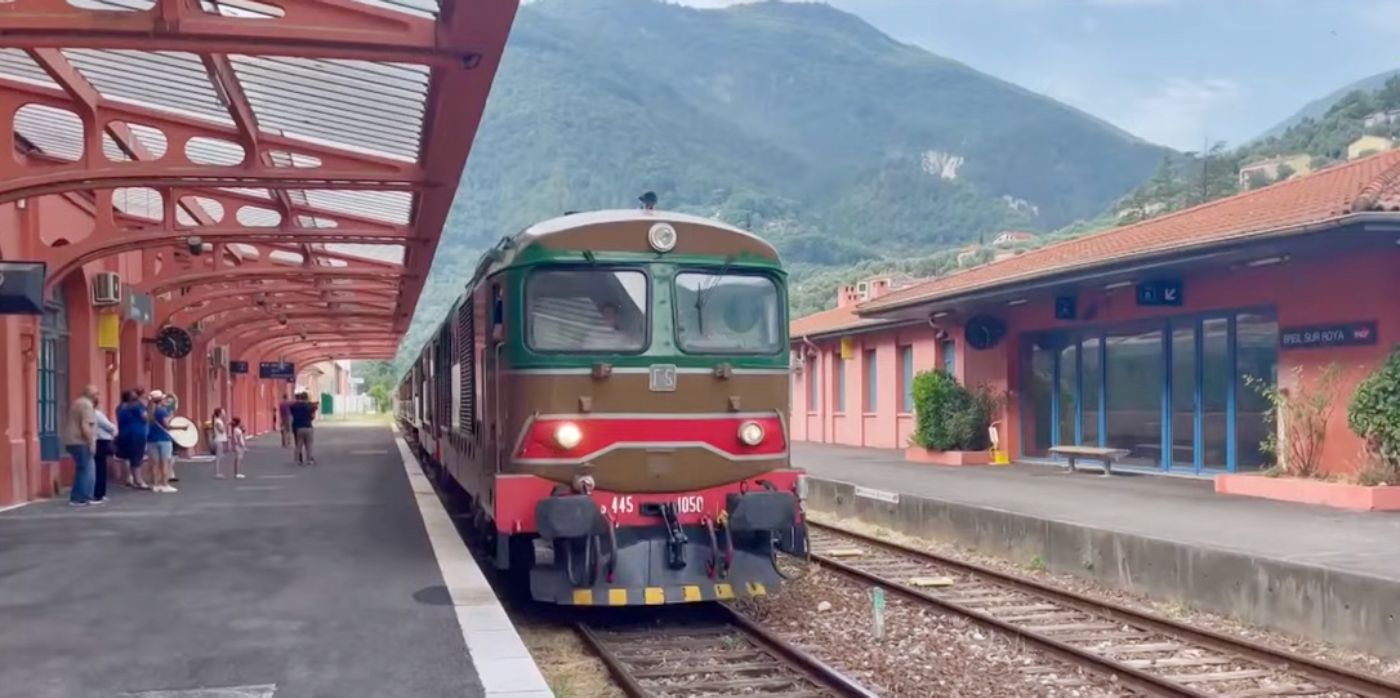
The Train des Merveilles between Nice and Tende will not operate this summer due to track repairs that will last until the end of the year. It has been replaced by a preserved train of Italian stock chartered by the Fondazione FS Italiane that will run between Ventimiglia and Tende on eight occasions this summer. The inaugural train is seen above at Breil sur Roya on Sunday 6 July hauled by preserved FS 445 1050, introduced in 1982. Apart from the small band on the platform there appears to be little interest. More detail via this link
Photo: France3Régions.
Vivarais Mallet returns to service
Following a two year overhaul costing almost €300,000 Vivarais Mallet 0-3-3-0T 403, built by SLM in 1903 returned to service on 1 July. After a short ceremony at Lamstre it worked the Train de l'Ardèche Mastrou to St. Jean de Muzols.
Withdrawn from Service in December 2022 the boiler has been extensively overhauled at Saint-Jean-du-Gard which has included the tube plate being replaced. While the boiler was away Vivarais staff overhauled the running gear and cylinders with reassembly starting in January when the boiler was returned. Since then testing and running in has taken place in readiness for the return to service.
Withdrawn from Service in December 2022 the boiler has been extensively overhauled at Saint-Jean-du-Gard which has included the tube plate being replaced. While the boiler was away Vivarais staff overhauled the running gear and cylinders with reassembly starting in January when the boiler was returned. Since then testing and running in has taken place in readiness for the return to service.
Photo: Train de l'Ardèche.

La Mure. Since reopening in April, the line has been dogged by locomotive failures and other problems, leading to suspension of service at the beginning of July. Hopes that renovation of two of the three locos would put the operation on a firm footing have been “completely dashed” the management said; “technical difficulties do not allow the public to be carried”. Solutions were being sought in an effort to save the summer season.

Neuves-Maisons. Locomotive No 6735 ‘Boyotte’, built by Hanomag in 1912, worked for 70 years in the SAM steel mill at Neuves-Maisons in Meurthe-et-Moselle until closure of the blast furnaces in 1988. Previously on display outside the works, the loco was moved on 5 July to the nearby Val de Fer mining museum. Photo: Radio France/MC.
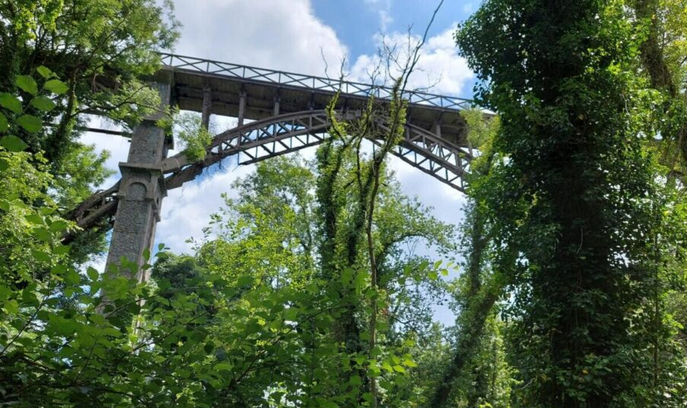
Photo: Le Petit Bleu des Côtes-d’Armor.
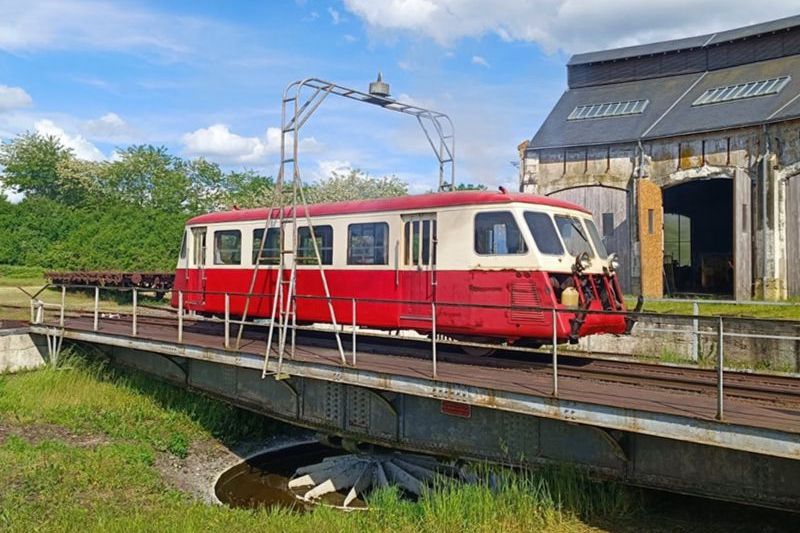
On 20 June an agreement was signed that will see FACS owned Billard A75D autorail No. 902 entrusted to RFVL (Rotonde Ferroviaire de la Vallée du Loir) at the Montabon rotonde, Montval-sur-Loir, for the next 20 years.
902 was originally part of the TVT (Trains à Vapeur de Touraine) fleet and operated from Richelieu. When TVT was wound up and the rolling stock distributed it was transferred to Train des Mouettes in Charente. In December of last year it was transferred to Montabon where restoration has been taking place. In May 902 began operating under its own power.
Restoration to fully operational condition will now continue at Montabon involving some former TVT volunteers.
RFVL currently have a 100 metre demonstration track that they hope to extend to 400 metres.
Photo: FACS Patrimoine Ferroviaire.


Saturday 19 July saw 230 passengers travelled on AAPSL's ( l’Amicale des agents de Paris Saint-Lazare) Train des Planches from Paris to Deauville-Trouville. With 60 year old BB 17016 providing the traction coaching stock was borrowed from MFPN. Seen above after passing Romilly-la-Puthenaye, heading towards Bernay on the outward journey. Photo: Jocelyne Bourneuf
Urban Rail
ÎdeFM/RATP. After several months of negotiations, the two parties have agreed a contract for the 2025-29 period. Recognising RATP’s complaint that the previous terms were ‘unbalanced’ to the tune of €150 million per year, ÎdeFM will fund the shortfall in return for an annual productivity increase of 1.2%. The bonus-malus system of performance payments is expanded to cover station cleanliness and accessibility, as well as staff/customer relations. The partners aim to make the network ‘the most efficient in the world’ by 2030. Annual payments to RATP amount to €3.7 billion, plus €2.1 billion a year for investment. For the first time, the contract excludes bus operations which are now open to competition. In the latest round of bidding for RATP services, Keolis won a lot comprising 28 bus services in communes south of Paris and the T9 tramway. RATP retained about 75% of routes offered.
Paris Line 4. Proposals by local communes to extend Line 4 southwards from Bagneux to Châtenay-Malabry (T10) and Massy-Palaiseau have received ministerial support. An initial 2.7km, partially underground, would run to Bourg-la-Reine whence it would take over the alignment of the Robinson branch of RER Line B.
Saint-Louis. Basel tram route 3 resumed operation into France on 8 July after six months’ closure for engineering work at Burgfelderstrasse on the Swiss side.
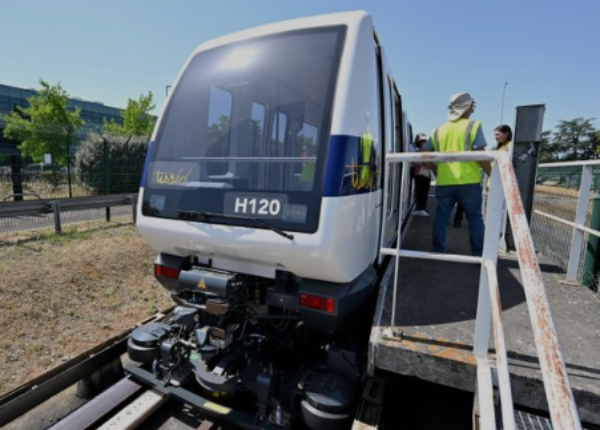
Toulouse. On 1 July Tisséo showed off the first of 15 Siemens VAL 208-NG3 cars destined to enter service at the end of the year. While still having 30 seats, the interior has been redesigned to offer more circulating space and easier accessibility. With 39deg recorded that day, Tisséo fielded questions about the system’s lack of air-conditioning. Such high temperatures had not been common when the metro was planned, it said, and thus no provision was made in the tunnels for aircon. Line C under construction will be air-conditioned. Photo: Tisséo.
Grenoble. Ordered 38 Urbos tramcars from CAF, with an option for a further nine. The 45m-long cars will gradually replace older 30m stock when delivery starts in 2028.
Grenoble. Ordered 38 Urbos tramcars from CAF, with an option for a further nine. The 45m-long cars will gradually replace older 30m stock when delivery starts in 2028.

Montpellier. Trial running started on 15 July over the 1.3km extension of T1 from Odysseum to Gare Sud de France, scheduled to open on 18 October. Photo: actu.Fr/CM.
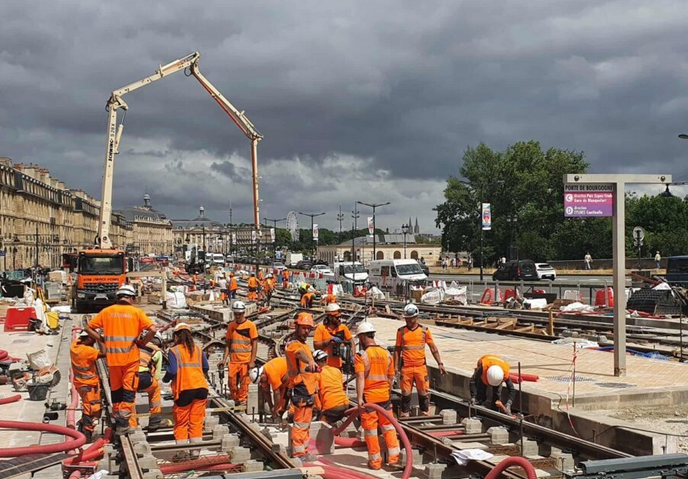
Bordeaux. Working to a tight deadline over the summer holidays, engineers hoped to complete track relaying at Porte de Bourgogne by the end of this month. Additional connections here will enable introduction of two new routes: E linking Floirac with Blanquefort, and F direct from the airport to Gare Saint-Jean and Bègles, each running every 10min. Photo: actuBordeaux/NG.
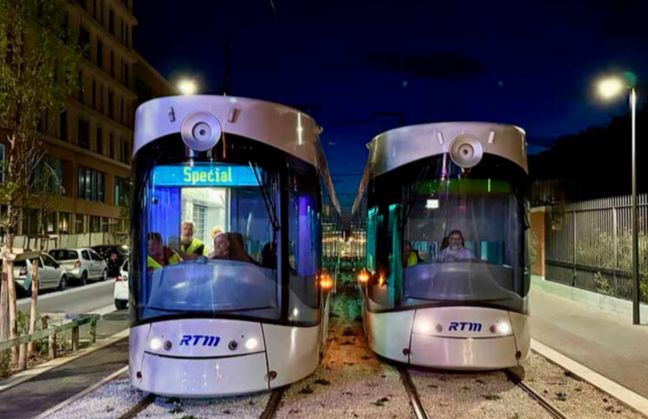
Marseille. The first of 15 new cars from CAF made trial runs on the southern extension of T3 in May before presentation to the public on 8 July. North and south extensions opening at the end of the year will add 6.2km and 11 stops to the network.Photo: Métropole Aix-Marseille-Provence.
Lyon. One ticket for journeys involving TER and urban transport will be introduced in December. €4.40 will be the fare for a TER journey in zones 1 and 2 with interchange to TCL metro, tram or bus.
Additions to FRS Photographic Archive during July 2025
To Photographic section
- A number of images to the David Thirlwall gallery in Folder 1, covering visits to Chambéry in September 2024 and to Northern France in June 2025
- A number of images of Jacques Jacques Poré visit to the Musée du Train at Châtillon-sur-Chalaronne to a new gallery in “Model Railway Exhibitions” in Folder 1
- Some 150 drawings that appeared in Loco Revue have been included in a new gallery in Folder 2
- Some drawings from the SNCF Archives/SARDO to Folder 2
- FACS No. 423 - May/June 2024 has been added to Folder 12
- “Charles Bonnefond - Ambulance Train - 1873” gallery has been added to Folder 7
- LVDR 801/June 1961, 803/June 1961, 814/October 1961, 841/April 1962, 850/June 1962 & 859/August 1962, all on electrification of the network
- US Military Railway Service report on French locomotives (dated around 1945)
- US Military Railway Service report on US locomotives, British Austerity locomotives and (mostly) European rolling stock (around 1945)
- Photo indexes for the “Peter Lea” and “Anonymous Photographer” galleries in Folder 1
- SNCF Traction Diesel - December 1959
- PLM - Notice Indicateur FLAMAN - 1909

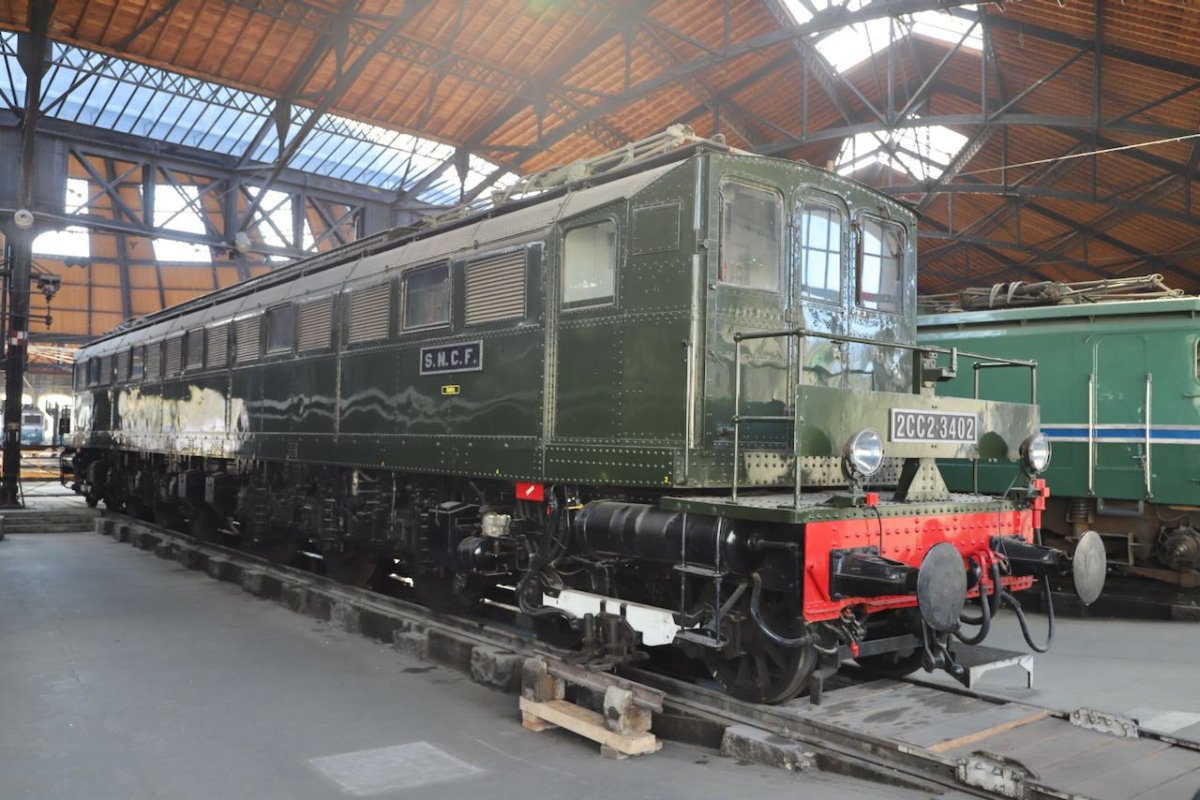
© Peter Lovell & Chris Bushell. The French Railways Society 2025. With thanks to Georges Turpin, Christophe Masse, Didier Delattre, Jean-Louis Poggi and Jocelyne Bourneuf.
